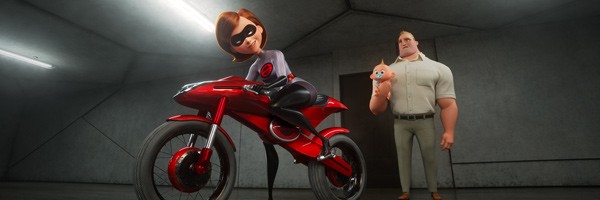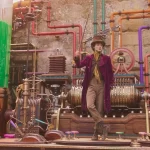Incredibles 2: Suffering by Comparison, by Tyler Smith
One of the problems inherent in movie sequels is the inevitable comparison to the original. It can’t really be helped. And, in this comparison, the sequel often falls short, if only due to the novelty having worn off. Some sequels, like Aliens or The Godfather Part II, sidestep this by incorporating enough new elements so as to feel like a fresh take on familiar material, while still being a logical extension of it. Brad Bird’s Incredibles 2 is a very good movie. In fact, it might even be a great movie. It’s tremendously entertaining and I have no problem recommending it outright. But, when one thinks of it in context of the original, it feels pretty thin. It lacks a lot of the deep thematic elements of the first film, and the complex character arcs. And many of the action sequences, while dazzling, ultimately amount to plot filler. In the end, the film feels like an entertaining riff on The Incredibles more than a fully-developed sequel. Nonetheless, it was fun while it lasted.
The story picks up right where the first film left off, with the Parr family jumping into action to defeat the Underminer. As they do, they catch the eye of business tycoon Winston Deavor (Bob Odenkirk) and his sister Evelyn (Catherine Keener). These two have decided to follow in their superhero-loving father’s footsteps and work to change the laws making “Supers” illegal. They do this by equipping Elastigirl (Holly Hunter) with the latest gadgets and surveillance technology, so that the public can see more than just the collateral damage caused by crimefighting. This forces Mr. Incredible (Craig T. Nelson) to confront a completely new challenge: staying home with the kids. As all this develops, a new threat emerges in the form of The Screenslaver, a mysterious villain who specializes in mass hypnosis.
There’s nothing particularly wrong with this story. It certainly is in keeping with the general themes of tension between domesticity and greatness, suggesting that perhaps there isn’t that much of a difference. And the new characters – particularly a young band of second tier heroes – provide some freshness to this world. As always, the voice acting is top notch, with Holly Hunter specifically able to bring out Elastigirl’s cautious enthusiasm about being back in the crimefighting game after years of homemaking.
The action sequences are every bit as breathtaking as those in the first film. Possibly even more so, as focusing on the improvisational dexterity of Elastigirl is an exciting contrast to Mr. Incredible’s brute strength. It is probably in this respect alone that Incredibles 2 makes the biggest contribution. There is more fluidity and creativity in these sequences than in the first one, as we are treated to a myriad of new heroes and abilities. As astounding as the action was in the first film, a lot has changed in the superhero genre in the last fourteen years, and Brad Bird has upped his game in response. These sequences are a genuine pleasure, and had the audience cheering in response.
And yet it all adds up to an experience that, while very satisfying, can’t really compare to the ambition of the first film. This shows in its plotting, as the story doesn’t seem quite complex enough to fill the movie’s two hour runtime. So we are treated to sequences that, while undeniably virtuosic in their execution, could be completely excised from the film without having the slightest impact on the story. This is also reflected in the characters’ arcs, which seem less pronounced. In fact, in most cases, they just sort of fade away, pushed aside in favor of third act reveals and enthralling action.
But perhaps this is all a bit unfair. Maybe I shouldn’t be so quick to compare this film to the original. Knowing what we do about sequels, any comparison is likely to breed disappointment. Perhaps it’s better to simply accept this film on its own terms.
This would be easier if Bird had not connected the events of this film so directly to the original. The audience may have aged fourteen years, but in the world of the film, and its characters, literally no time has passed. This is a bold move, but a risky one. Because it invites comparison to a film released almost a decade and a half ago, during which time genre, filmmaker, and audience sensibilities have changed, and anticipation has grown. One could make the argument that the film in its current form might have been more generally acceptable had it been released a mere three or four years after the original. But to wait so long before making a sequel suggests to the audience – rightly or wrongly – that this should be seen less as a run-of-the-mill sequel and more of a triumphant return.
And, indeed, the characters have returned, and it is a largely pleasurable experience. It’s just not a triumphant one.































